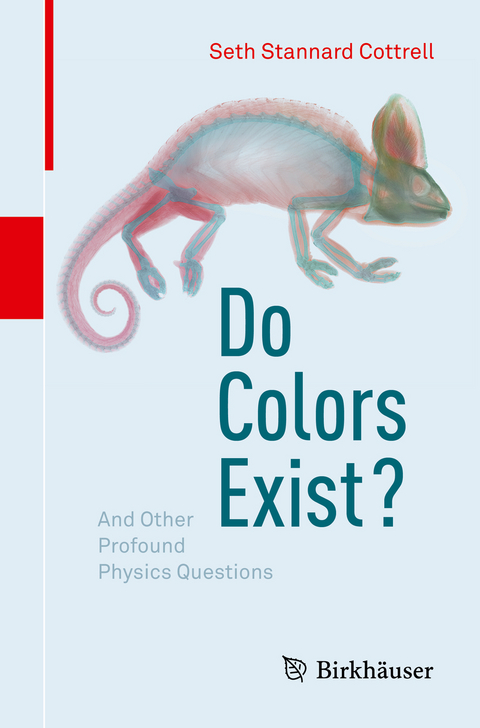
Do Colors Exist?
Springer International Publishing (Verlag)
978-3-319-64360-1 (ISBN)
Why do polished stones look wet? How does the Twin Paradox work? What if Jupiter were a star? How can we be sure that pi never repeats? How does a quantum computer break encryption? Discover the answers to these, and other profound physics questions!
This fascinating book presents a collection of articles based on conversations and correspondences between the author and complete strangers about physics and math. The author, a researcher in mathematical physics, responds to dozens of questions posed by inquiring minds from all over the world, ranging from the everyday to the profound.
Rather than unnecessarily complex explanations mired in mysterious terminology and symbols, the reader is presented with the reasoning, experiments, and mathematics in a casual, conversational, and often comical style. Neither over-simplified nor over-technical, the lucid and entertaining writing will guide the reader from each innocent question to a better understanding of the weirdand beautiful universe around us.Advance praise for Do Colors Exist?:
"Every high school science teacher should have a copy of this book. The individual articles offer enrichment to those students who wish to go beyond a typical 'dry curriculum'. The articles are very fun. I probably laughed out loud every 2-3 minutes. This is not easy to do. In fact, my children are interested in the book because they heard me laughing so much."
- Ken Ono, Emory University
Seth Cottrell is a mathematical physicist and the creator and co-editor of Ask a Mathematician / Ask a Physicist.
Big Things.- Small Things.- In-Between Things.- Not Things.- Index.
Cottrell's book is a feast for curious minds, particularly those hungry for more equations and deeper mathematical detail than what is usually present in scientific books aimed at a general audience. Representing a sort of dialogue between the author and readers of the website Ask a Mathematician / Ask a Physicist, one finds big questions ranging from reasonable ("What does E=mc2 mean?") to outlandish ("What would the Earth be like to us if it were a cube?") to outright mind-bending ("Does quantum mechanics really say there is more than one me?") - all answered in friendly yet satisfyingly detailed short articles. Readers are sure to finish the book aware of a richer, more nuanced universe, and with many big questions of their own.
Robert Schneider
Department of Mathematics, University of Georgia
| Erscheinungsdatum | 14.03.2018 |
|---|---|
| Zusatzinfo | XIII, 278 p. 211 illus., 190 illus. in color. |
| Verlagsort | Cham |
| Sprache | englisch |
| Maße | 155 x 235 mm |
| Gewicht | 499 g |
| Themenwelt | Mathematik / Informatik ► Informatik ► Theorie / Studium |
| Mathematik / Informatik ► Mathematik ► Angewandte Mathematik | |
| Naturwissenschaften ► Physik / Astronomie ► Theoretische Physik | |
| Schlagworte | Mathematical Applications in Computer Science • Mathematical Applications in the Physical Sciences • Mathematical Modelling • Mathematics • mathematics and statistics • Philosophy of math • philosophy of science • Popular science • Quantum information • Quantum Physics • Relativity |
| ISBN-10 | 3-319-64360-6 / 3319643606 |
| ISBN-13 | 978-3-319-64360-1 / 9783319643601 |
| Zustand | Neuware |
| Haben Sie eine Frage zum Produkt? |
aus dem Bereich


